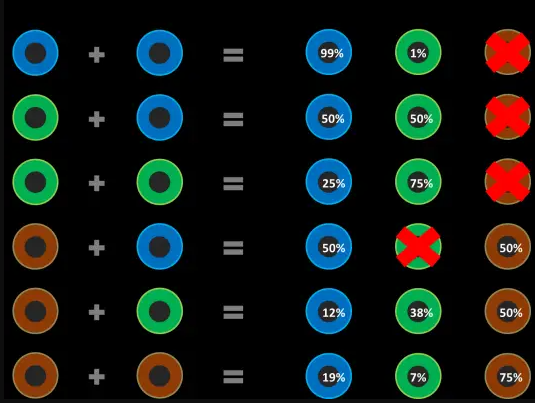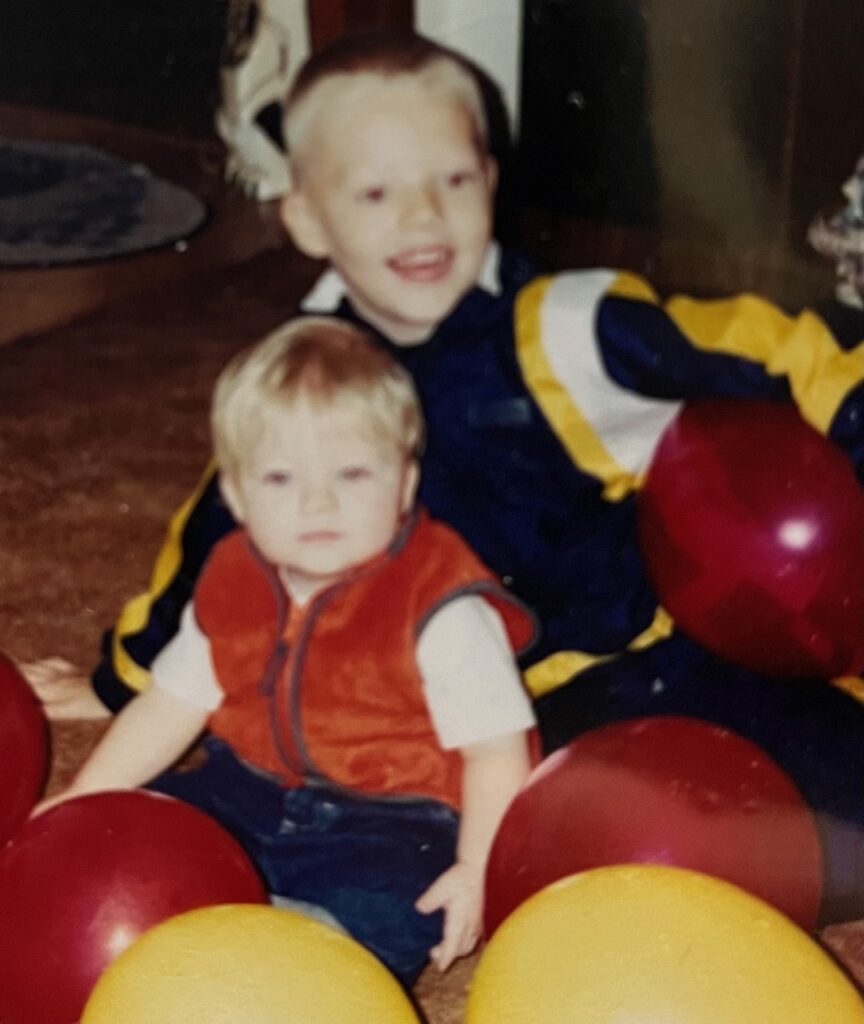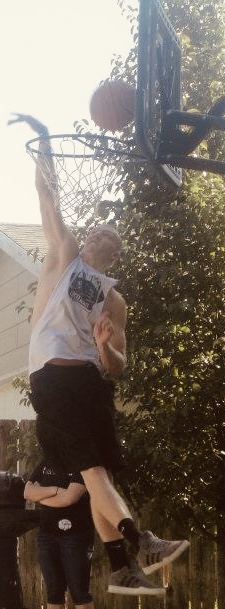Genetics. The intricate dance of DNA from each of our parents, uniquely sculpting us into … well us! As I was going through some genealogy research recently, looking at pictures of past relatives, my mind started to wonder, as it usually does. How can a great great great niece look just like her aunt from so long ago? Why do some kids look just like one parent and not the other? Here are some fascinating facts about ways that genetics work.
We get half of our genes from our mother and half from our father. Furthermore, the combination of these genes and how they interact with each other determine all kinds of traits! Hair color, eye color, and even earlobe shape! Single genes determine these specific traits. Whereas, multiple genes form the more complex traits. This would be, for instance, things like height, skin color and intelligence.
As stated above, we get a cocktail of genes from our parents. Fifty-percent. It’s a roll of the die as to which 50% a child receives. Siblings with the same parents don’t always look alike! The combination of these genes and how they interact with each other determine all kinds of traits! Indeed, we need to take a look at some examples.
Eye Color

Eye color is one such characteristic. For instance, the most common color for eyes is brown. That’s because the gene for brown eyes is dominate. In addition, the blue eye gene is recessive. What does that mean exactly? If you have two parents, one with brown eyes and one with blue, they actually have a 50% chance of having a child with brown eyes, and a 50% chance of having a child with blue eyes. Crazy right? Here’s why:

Let’s say both parents have brown eyes and both pass the brown eye gene to their child, the child will have brown eyes. However, if one parent passes the brown eye gene and the blue-eyed parent passes the blue eye gene, the child will have brown eyes because the brown eye gene is dominate. At the same time, if the parent with brown eyes passes on a blue eye gene and the parent with blue eyes also passes on a blue eye gene, then the child will have blue eyes. This is the way a recessive gene will prevail.
The picture above details the chances of a child having a certain eye color, along with percentages of possibilities. Certainly a simplistic look at how eye color is determined. But it also explains why siblings can look different!
At the same time, did you know that blue eyes really aren’t blue? Low amounts of melanin (yellow-brown pigment) in the eyes cause light to scatter off the iris giving them a blue appearance. In addition, there is pheomelanin (red-orange pigment), and eumelanin (black-brown pigment). These pigments determine the intensity of color and also whether you have green, hazel, amber, light brown, dark brown, bright blue or gray eye color. Captivating!
Hair Color

Hair color determination happens just like eye color. The alleles (genes), passed down genetically from each parent, determine the hair color a child will have. There are basically five hair colors for humans: black, brown, blonde, red and white/grey. Red is extremely rare; only about 2% of the world’s population is naturally redheads. Blonde is the next rare type coming in at 3% as a natural hair color with children being the largest population to have it. Brown comes in next with 11% and Black/Dark Brown is the winner of the most common hair color. Of course, there are about 6-23% of the world population with white/grey hair as they age.
In reality, and just to complicate things, depending on the melanin pigments, there could be a variety of shades for each color. Moreover, the lack of pigments is what causes our hair to turn white/grey as we get older. So yes, genetics do play a part with premature graying. We can thank our family genetics for having to wash those grays right out of our hair. Hair color changes over the span of our lives, even if we don’t help it out by paying to turn it a certain color.
As an example, both my sons were born with dark brown hair. So was I. My youngest had platinum blonde hair by the time he was 1 and up to the end of high school. Then his hair turned back to a brown color. His big brother, turned blonde as a little guy, and still is although a darker blonde. Both kiddos have red in their beards. I was platinum blonde by 1, was dishwater blonde by 7th grade, back to platinum by my senior year, and it’s been a roller coaster ride with a little white now thrown in ever since.
Facial Features

Genetics is a very complex subject! Until recently, the role genetics play in determining facial appearance was not really understood, and still isn’t complete. However, according to a newer study, published in Nature Genetics, there have been breakthroughs in identifying regions of the chromosomes that play a role in facial features. See the full article here for a great read: We scanned the DNA of 8,000 people to see how facial features are controlled by genes
In a nutshell, however, many features our children and grandchildren inherit depend on the dominant / recessive genes passed down through the generations. Believe it or not, there are genes that control not only the width of the nose (broad being dominant) but also how pointy it may be, or “hooked”. Furthermore, genes identified in studies are said to control the width of the nostrils while other genes have been identified to control the look of the chin.
Additionally, it seems that there is a connection between genes and your pearly whites. Genes are to blame for crooked teeth, spaces between teeth, and even gum disease! Teeth meticulously brushed may still have issues…could be all in the genes.
Height

So many items, so little time. With that said, the last item we’ll ponder here is height. I know this always seems to be a subject that comes up with new parents, or discussion with grandparents. How big will Junior be? Will Princess be petite like mom? Other factors, such as nutrition, environment, or health factors, can influence anywhere from 40-60% of height, while genetics does play a large part in determining it.
In that case, how can we know what height our little cuddle-bugs will be when they are grown? Usually, it’s a guessing game. There is no real way to be 100% sure. Standard growth charts plotting a child’s head circumference, weight, and height compared to other children in that age range is the most common practice. Likewise, an average of sorts can be taken of both parents to come up with a prediction. Let’s try this calculation I found on Medical News Today.
Mom = 63 inches Dad = 69 inches For a girl, add the two numbers together, subtract 5 inches, and divide by 2. That comes out to about 5′ 3.5″ roughly. Well, I’m 5′ 9″+ so that was not near correct. So much for that!
Likewise, here is another prediction: Mom = 69 inches Dad = 72 inches For a boy, add the two numbers together, add 5 inches, and divide by 2. That comes out to be about 6’1″. So having two sons, same parents, one is 5′ 10″ and the other is a tad over 6′ 4″. I always tell the youngest that he got robbed…the three inches he should’ve had were taken by his brother! Go figure.
Love Who You Are
However we turn out, we are all wonderfully unique, and yet posses a piece of our family so they are with us always. That’s kind of a magnificent way to look at who you are. A piece of the past, with you adding to the story, ready to pass something on to the future.
